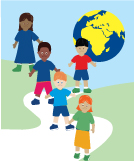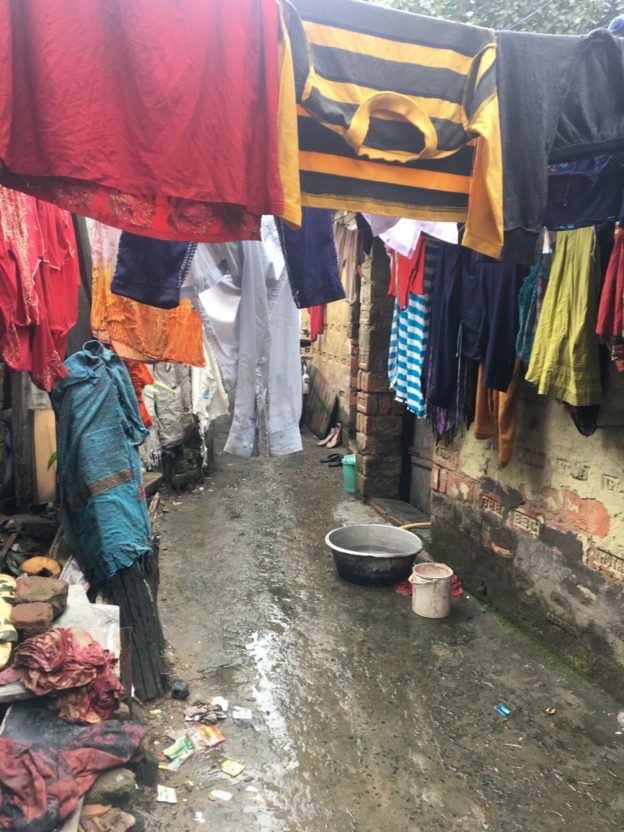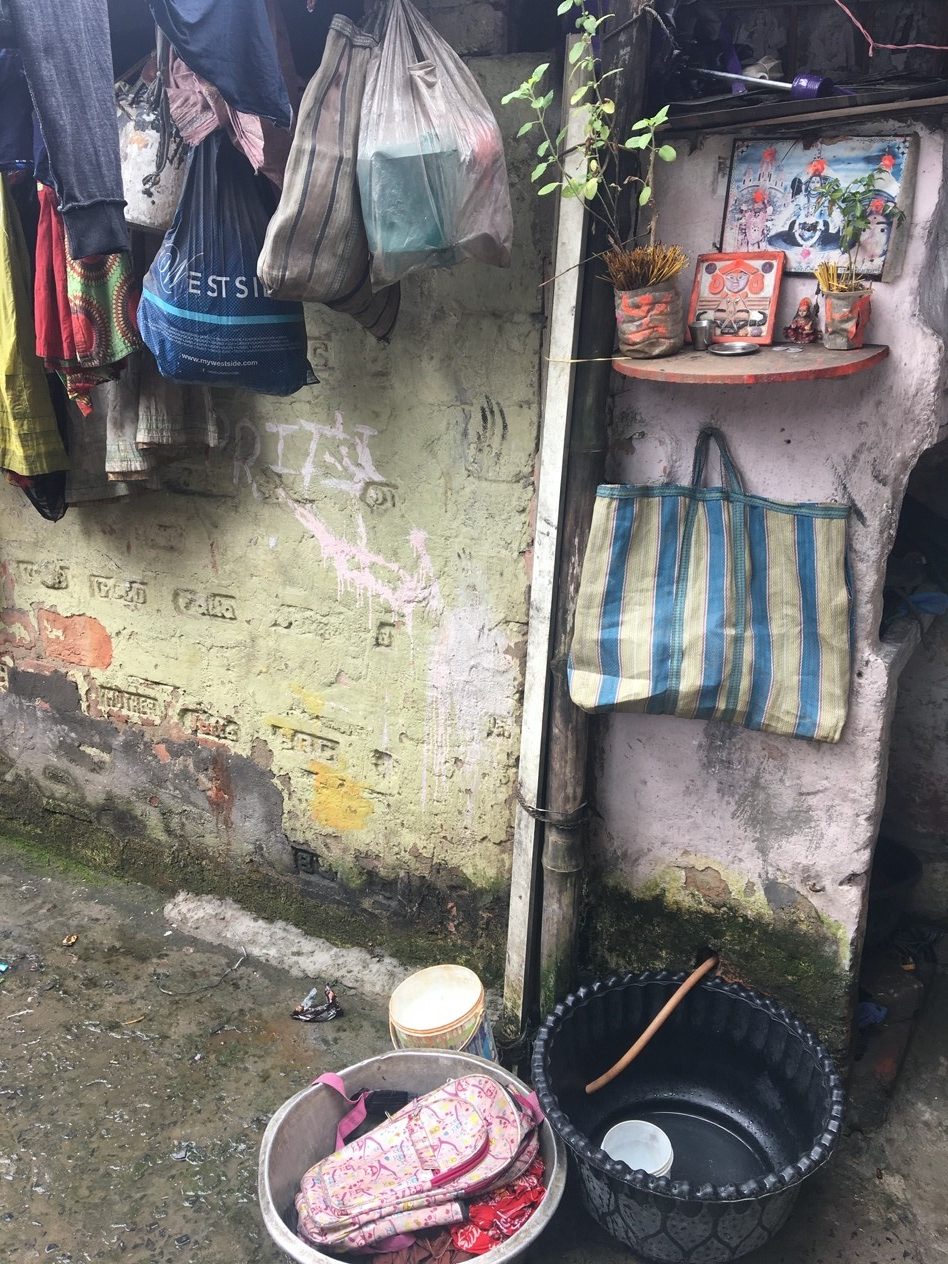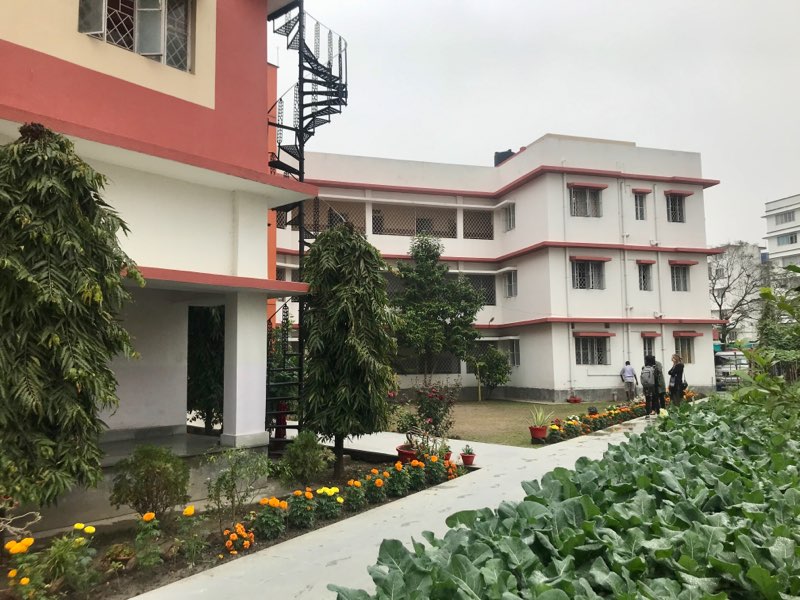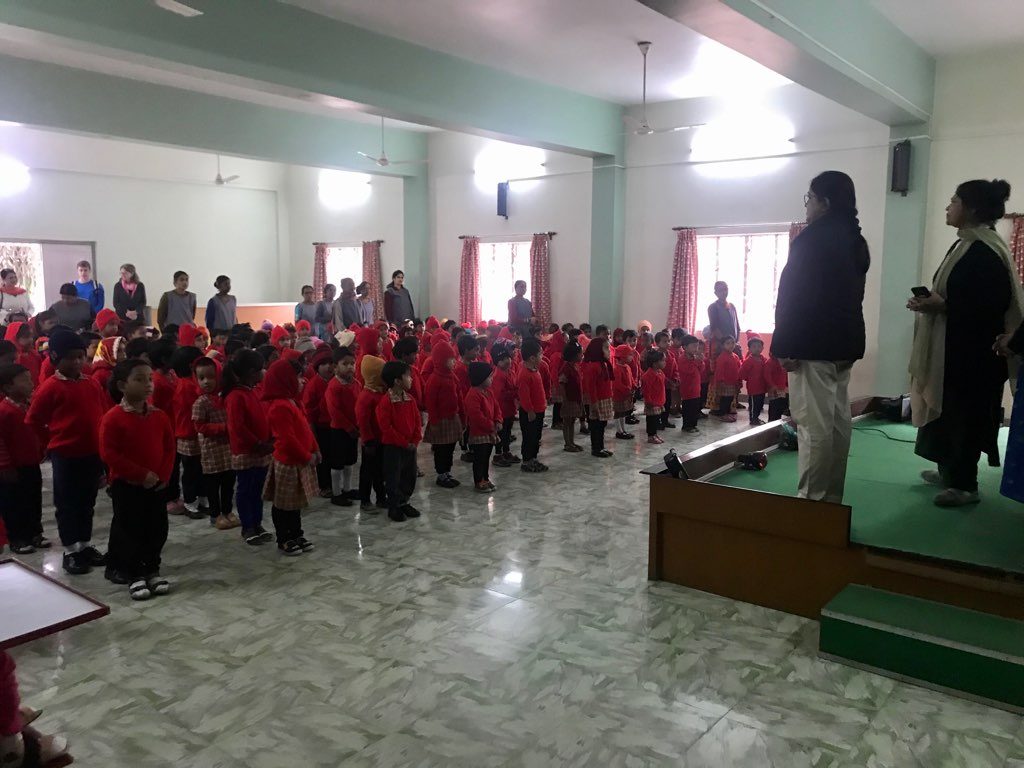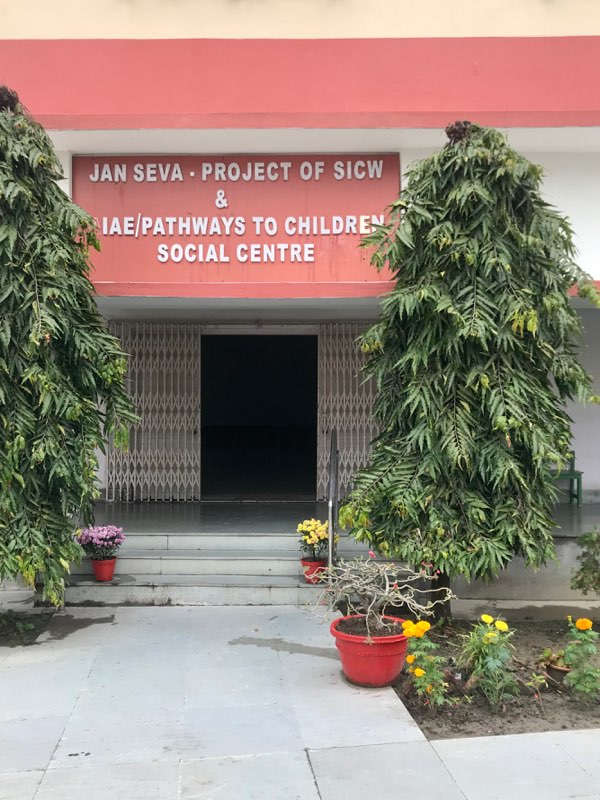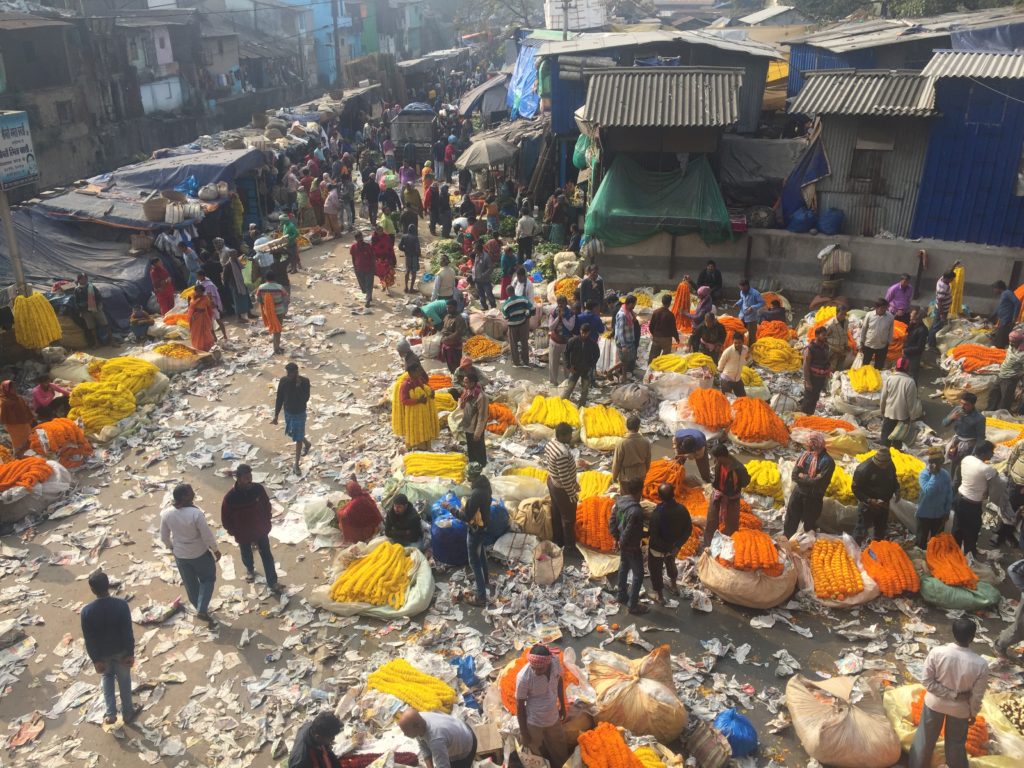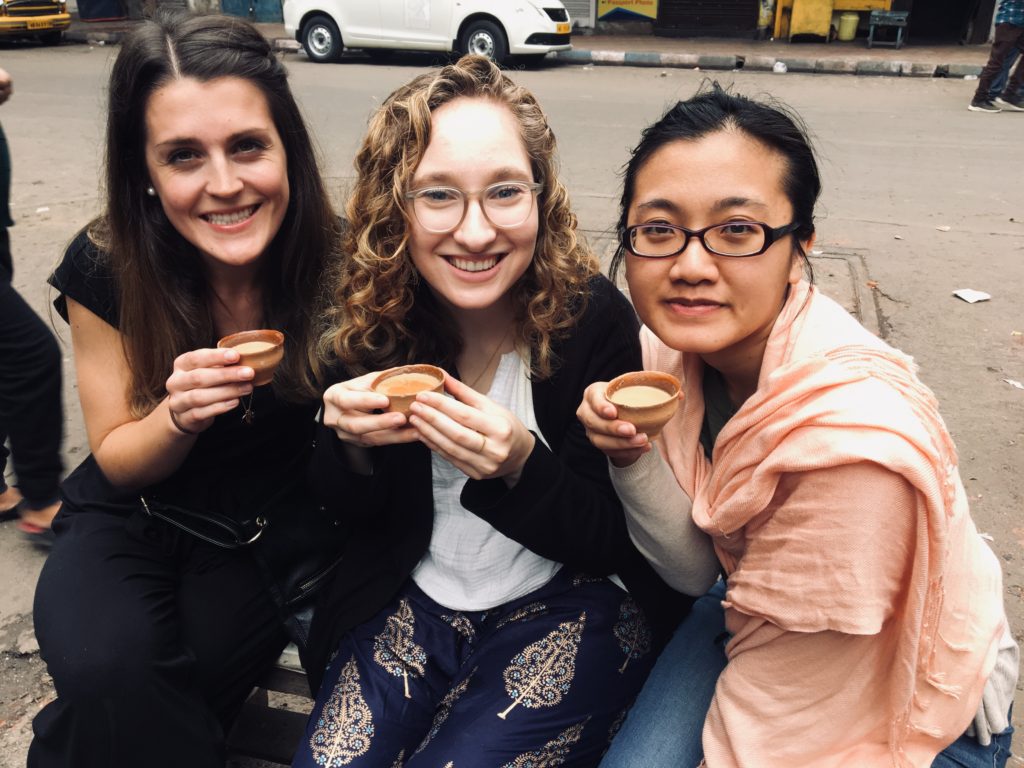U of M students studying public health in India returned home shortly before the COVID-19 pandemic exploded. What they found there underscores the importance of public health efforts, and how hard this pandemic will hit the poorest in the world. Read about this in “The Education of a Public Health Worker” by Elizabeth Foy Larsen here
01/06/2020 by Zoe Kusinitz
Featured pictures are 1) Alleyway leading to the home of the first mother. 2) Outside the home of the first mother. The orange tube resting in the black bucket is the government issued water tap. This is where they bathe, wash clothes, and get water for drinking and cooking.
During our first week in Kolkata we had the immense honor of being invited into the homes of two families at Jan Seva. These two mothers graciously welcomed me and the two other UMN public health students into their homes and allowed us a glimpse into their lives. Together they have borne more burden and demonstrated more strength than I can even imagine. Everyone who has the opportunity to travel abroad, work in concert with local aid efforts, and become acquainted with people living really tough lives will tell you that it gives them perspective- that they are humbled by the experience. It does and I am. But beyond that I am filled with tremendous grief and somehow, a little hope. We learned different things from each woman and her life circumstances.
The first mother we spoke to lives just a block from the school in a one room home on occupied land with her two-year-old son and husband. What we might call a squatter’s village or shanty town, they refer to as occupied land. She is a domestic worker and her husband is a daily laborer. Together they earn $120 per month. They sleep on the concrete floor and use a government provided tap outside of their home for water that is shut off during the day. They use a communal latrine and cook meals over a small gas stove in the corner of their room with little ventilation. Clothing hung from ropes strung across the ceiling made mostly of tarp covered wood. We stood in the room, no bigger than 6ft X 6ft, all together and she graciously answered our questions about her daily life. We learned that she only cooks lentils and rice because they can’t afford other foods or store them properly. Although she and her family live in such extreme poverty, she appeared to be happy and proud of her home, as she should be.
We came away from this visit with a tangible understanding of the reality in which these families exist and how this limits any resource-heavy or time-consuming public health intervention. Earlier that day at the school, pediatric dentists from UMN held a dental clinic and provided cursory dental exams for the kids allowing them to ascertain whether any kids were in urgent need of emergency care. Afterwards, they held a parent session where they encouraged the parents to aid in brushing their kid’s teeth and perhaps even floss. After visiting this mother’s home, it became abundantly clear how absurd it is to expect parents living in such poverty to floss their kid’s teeth when they don’t know when their next meal will be or when the water tap will turn back on. It truly grounded our understanding of the challenges of public health intervention in this setting.
The second visit was to a home much farther from the school. Although this mother lived in a slightly larger home (three rooms instead of one) than the first, her circumstances appeared to be much graver. She was the victim of child marriage- she was married off to a man 20 years her senior before her first menstrual period despite the practice being outlawed in India. She is 26 yrs-old and has a thirteen-year-old daughter and three-year-old son. Presently, she is physically, sexually, and emotionally abused by her husband. Her husband is an alcoholic and does not work. She is the sole earner for the household, working twelve hours a day at a near-by factory. She fears for her daughter’s safety as she is rarely home. She thought only of her daughter when asked what kind of help she wished for. She wishes for enough money to send her daughter to boarding school where she will be safe and receive an education.
She began to cry as she shared her story with us, and we wondered if it was appropriate to ask her to share such personal information with us. We offered what little we could by thanking her for welcoming us into her home and sharing her story with us; saying that we were sorry that she has had to experience such pain and that she did not deserve it.
These two women demonstrated such grace and generosity by inviting us into their homes and sharing their stories with us. We were truly devastated after leaving these homes. We were filled with grief at the thought that these women must continue to exist in such trying circumstances and that we only fleetingly passed through their lives. It is immensely devastating that women all over the world continue to endure such pain, poverty, and violence, largely living in isolation from any support. However, despite this tragedy these women persevere. They continue on because they have to- for their children and themselves. We will carry forward the stories of these women with us into all public health work that we do in the future, allowing us to lead with empathy and dedication.
January 10th, 2020 by Hannah Currie
Pictures: Jan Seva School & Community Center
My greatest challenge thus far in India has been in trying to pen my thoughts to a country undefinable. The joy, the chaos, the sights, sounds, and smells aren’t things I’ve been able to put words to. India, the country of contrast and sensation overload, and Kolkata, the ‘City of Joy,’ have been different than anything I’ve experienced in any other part of the world. They’ve been filled with beauty, knowledge, grief, wisdom, resilience, compassion, poverty, and gracious hospitality. In turn, we’ve been filled with immense gratitude and awe. We are immersed in a culture incomparable to our own and I struggle to try and define the unmatchable experiences we’ve had, to tell the stories we’ve heard, share the treasured rhythms of our daily life in India, and make audible the noises that constantly fill our background. I’ve come to realize that I’m discrediting the wonder that India is by trying to explain, with sufficient justice, the entirety of our experience here so far, but, I’ll do my best to try, and with that, a few moments, days, and circumstances come to mind.
Our days are filled with working in the Community Health Program at Jan Seva and alongside the Society for Indian Children’s Welfare. It has been the greatest honor to partake in the work taking place in this community. I could write for days about this school and the safe haven it is for these 217 children, but there are a few particular things I’ve been particularly encouraged by. Our first day opened with a traditional Indian welcome from all of the teachers and students, and before getting stuck into our work, we toured the facility and met some of the teachers in the classrooms. I was struck by the special needs program at Jan Seva, not only by the compassion of these teachers, but by the presence of a Physical Therapist to help with motor function and an almost 1:1 teacher/caretaker to child ratio. It is truly wonderful that these children are streamlined into an integrated school and are being thoroughly equipped to thrive in mainstream education in West Bengal following their completion at Jan Seva. They are cared for with such kindness and it shows. All of the children at Jan Seva are fed two meals a day, much of which come from their own on-site community garden, for six days a week, which also provides space for their parents to work and make an income for their family. At 6 years of age, these children graduate from Jan Seva and are streamlined into public education in Kolkata, having been given a head start through early education. I’m so grateful for this school and its offerings on behalf of these children and families.
Our days at Jan Seva have filled me with hope, and yet, they’ve also been the gateway to tremendous grief. The nature of our work here in Kolkata has put us in the presence of women who have faced more tragedy in their twenty-something years of life than anyone can comprehend. I look into the eyes of women who are survivors of severe domestic violence and can’t leave their husbands and see an indescribable amount of pain and sorrow. To see poverty is one thing, but to see poverty made humanity through trauma is an entirely different experience. I’d love nothing more than to see the captive set free, and yet I grapple with not knowing how to help these women. We don’t speak the same language, but looking into someone’s eyes and seeing decades of abuse does that for me. I do know, though, that it would be impossible to encounter such grief and not be moved by it, so, with that, I carry these stories with me home and into my career, continually being transformed by these stories of resilience.
Despite all of this, though, from right to wrong and rich to poor, at the end of the day, life in India is life communal, and it’s a beautiful thing. I don’t love the circumstances and sheer poverty that force people to live life so openly, but I do love the sense of community that permeates everything as a result of this way of life. I have found myself grateful for the simplicity of life shared in roadside conversations and cups of street chai. I’m thankful for the countless meals shared with the other students and U of M professionals here, wrestling often with the tough questions that India has posed to us. I find myself confronted with the challenge of how to best support local communities, individuals, and programs in ways that lift them up and sustain them without undermining the efforts already being put forth. I wonder how to maintain intervention created through a short-term trip in a sustainable way. I’m challenged in how to engage in public health intervention in a culturally humble manner. Finally, and perhaps the most important of all, I’m challenged in trying to reconcile the injustice I’ve seen while knowing I can’t fix it.
I don’t have an answer, but I’ll continue to strive for it. I’m humbled with gratitude for all that India is teaching me.
1/11/2020 by Jeanne Moua
Hello Kolkata!
As I stared out the windows of the Baptist Missionary House car into the expansive spread of Kolkata on the very first day, I was met with tremendous curiosity, fear, and excitement. I was overstimulated with the sights, sounds, and smells. Flashes of green palm trees, colorful flags, red bricks and clay, children playing cricket, wild dogs, and goats tied to buildings scattered across the windows. Horns were blaring from both sides and the smell of urine, fruits, litter, and spices consumed my senses. Darts of residents were walking across the streets paying no heed to the traffic. Cars do not drive in single lanes here. Instead, they are squeezing through the smallest openings in the traffic trying to get to their destination.
Even as I take a few steps out the doors of the Baptist Missionary House where we are staying, I see so many public health concerns. There are piles of trash thrown and forgotten in the streets. There is an elder woman with her arms extended begging for rupees. There is a man who has sat in the same position at the end of the block waiting to clean and polish shoes. There is a person tightly wrapped in blankets and sleeping on the stone-cold brick pavement. There are butchered goat heads laid down on the streets waiting for a customer to come along to buy them for their meal that day. There are daily laborers and students jumping onto moving rickety trams and city buses so worn down that the windows have broken or rusted. Kolkata, India is populated by 4.5 million Indians and they never stop moving; the horns never stop blaring.
I have spent approximately 8 days here, and each day is a new adventure. The two other public health students and I have spent weekdays at the JanSeva school meeting the children, undergone home visits in poverish communities, participated in a self-defense workshop with victims of domestic violence, discussed educational material for low literacy populations with community health workers regarding child hygiene, bathroom etiquette, safe touch, tuberculosis, cancer, and many others. However, I ask myself what can be accomplished in 2 weeks? Will our presence here make a difference in the lives of these children and parents at the JenSeva school? There are so many health topics here to tackle yet choosing and prioritizing will exclude many members of the school and overall community.
The longer I am in Kolkata, I am realizing that I am here to learn and listen. Yes, I am also discussing and giving out ideas, organizing health programs, and researching and writing reports in hopes of bettering the community health at JanSeva, but more importantly I am listening and learning from the voices of the women of domestic violence, from the voices of the community health workers who are struggling to address the health of the parents and children, from the voices of the students who find joy in the smallest acts, and from the voices of every Indian resident I come across on the streets. They are people who come from various backgrounds, religion, and ethnicities. It will be wrong to assume that each Kolkata resident’s experience is succumbed by poverty, low literacy, and poor health just because they live in what is deemed as a “developing country.” They are doing well with the limited resources they have considering the location, traditional beliefs, and history. Kolkata is beautiful because each person, animal, or item you come across tells a unique story.
There is so much good here. The sense of communion on the street is something that is unseen in the United States. There are men sitting together in broad daylight playing cards or drinking tea together. The people are so kind and continue to persevere even in the hardest conditions. The culture is so rich with the flower markets, the book markets, restaurants led by workers with special needs, the rows of colorful saris, public health messages secretly embedded into advertisements, steps into the Ganges where they release clay statues of Hindu gods among many others. I am so privileged to be here and to be able to share stories with the people I have encountered during this short visit to Kolkata. The goal of public health is to protect and assess individual, community, and environmental health through organized efforts. With the richness of the Kolkata community, I am optimistic that the community health will continue to improve as knowledge are swapped while hearing about the different experiences of the every day person.
